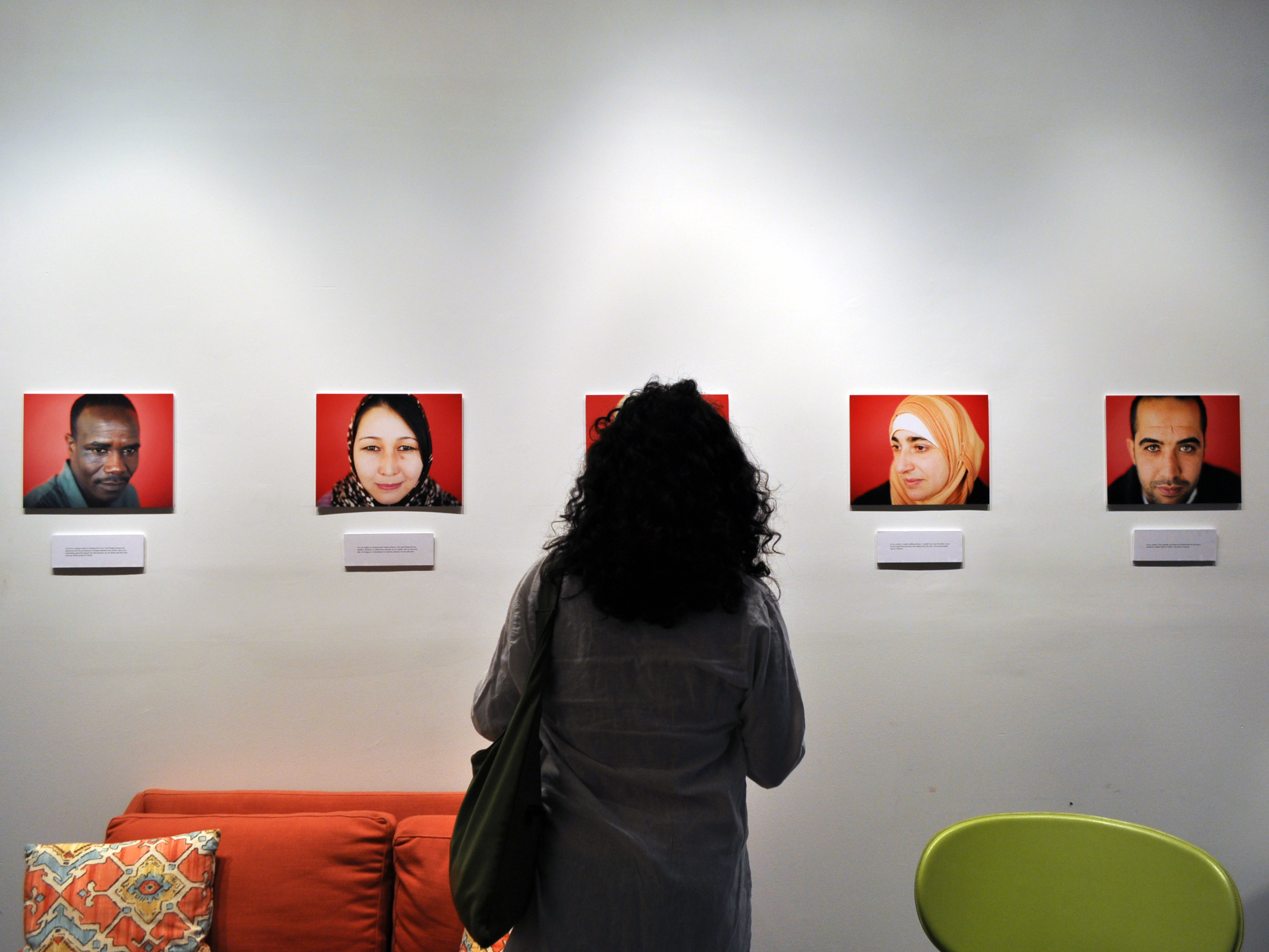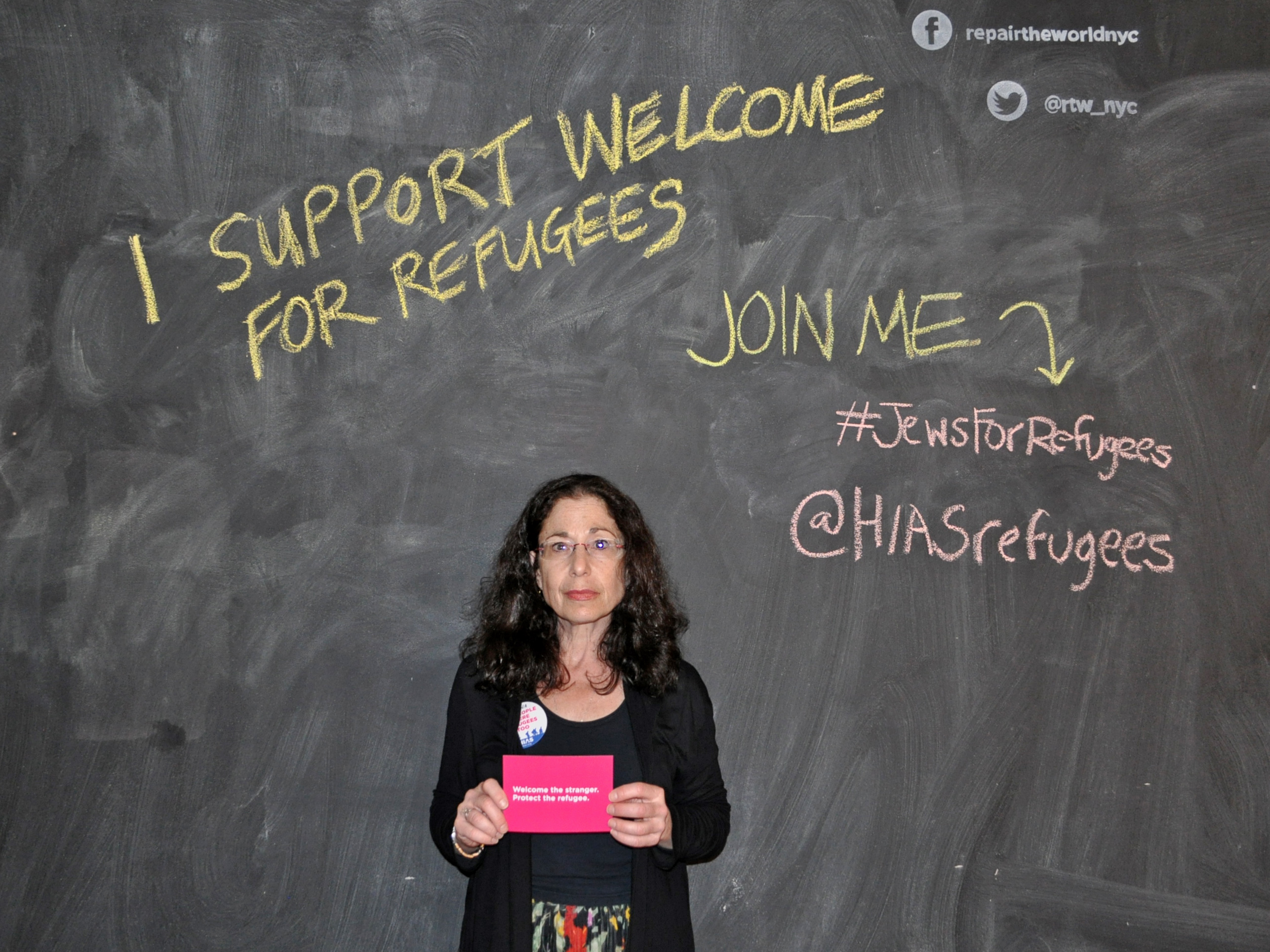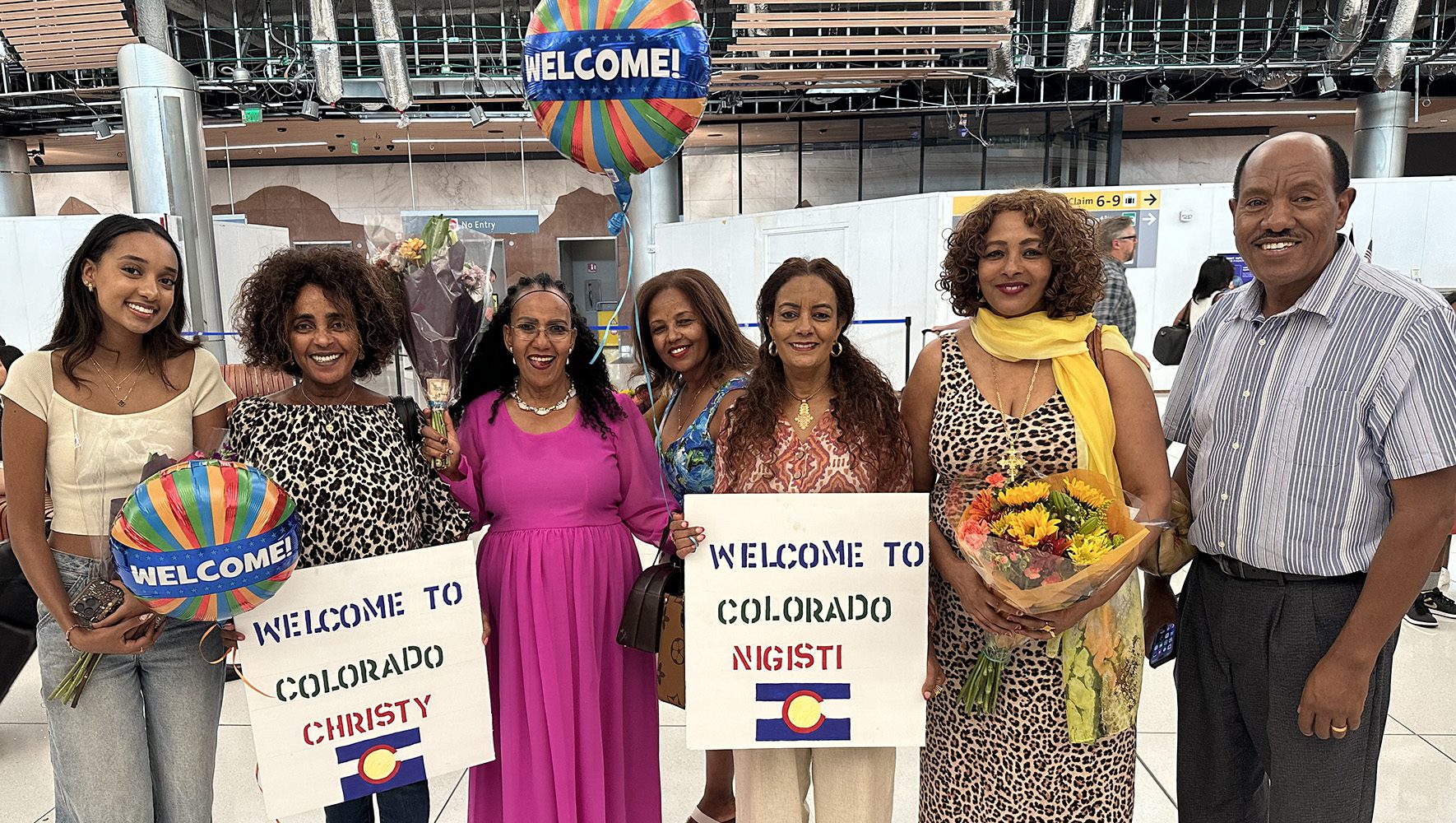For Refugees and Volunteers Alike, There’s No Place Like Home
By Rachel Nusbaum, HIAS.org
Jul 21, 2016
On a warm summer evening in late June, a crowd gathered in a Brooklyn storefront for an art exhibition. A common occurrence in this neighborhood dotted with galleries and cafés, but this show, No Place Like Home, featured photographs and videos telling personal stories of both refugees and the people who offer shelter, advocacy and other resources to them.
Part of a broader campaign organized by HIAS and Repair the World to draw greater attention to the global refugee crisis, the event featured a gallery tour with curator Jonathan Allen, remarks by Rabbi Jennie Rosenn of HIAS, and reflections from HIAS volunteers.
Marina Berger, a personal chef, got involved with HIAS after hearing her rabbi speak about the Syrian refugee crisis during Yom Kippur services last fall. She recognized a familiar name among the organizations that were mentioned as helping refugees in the United States.
“HIAS resettled my parents, brother and extended family when they emigrated from the Soviet Union in the 1970s,” Berger said at the event. She reached out to HIAS about volunteer opportunities, and learned about the HIAS-CIVIC letter writing group, which meets monthly to handwrite letters to asylum seekers who are currently being held in detention facilities in the United States.
“I ended up exchanging recipes with a Ghanaian man seeking asylum in California, which was delightful, unexpected, and touching,” Berger said.
Ilana Boin-Wallach, another HIAS volunteer, also shared her experiences with the art show attendees. “I’m a High Holiday cantor, and two years ago I found myself singing the holidays against the backdrop of the catastrophes in Syria and Iraq–in particular, the Yazidis being hounded and murdered, like us, 70 years ago–and wondering how this could happen while the rest of the world looked on. I often feel as I chant the Kol Nidre and other prayers, that all the Jews of the past, including the most desperate, are there with me. In one prayer, I sing ‘who will live, who will die? Who by water, who by fire?’ and a catalogue of other horrors. Suddenly this wasn’t history, not a collection of shadowy ghosts, but literally true, now.”
“I needed to do something more than feel or pray or sing. And HIAS has given me a way to respond, one individual at a time, even within the limits of the ugly anti-immigrant politics in the U.S,” Boin-Wallach said.
Boin-Wallach has been involved in two HIAS volunteer efforts, one writing letters to immigrants who are in detention and another providing an English-speaking conversation partner for newly resettled refugees and asylum seekers, in partnership with the English-Speaking Union of the United States. Boin-Wallach described the letter writing as “intense and very meaningful”.
“We connect across cultures, letting the detainees know we are thinking of them and hoping and praying for them. We also remind them of life outside their current situation, talking about hobbies, music, food, our cities and countries, and hearing back from them in kind,” Boin-Wallach says of her two correspondents.
“They always say how much they appreciate hearing from us, knowing that someone is thinking of them – that receiving a letter changed their mood completely. It’s very humbling to hear their immense gratitude at receiving a page or two from a stranger in New York. And it’s incredibly moving to receive their good wishes and blessings for me.”






